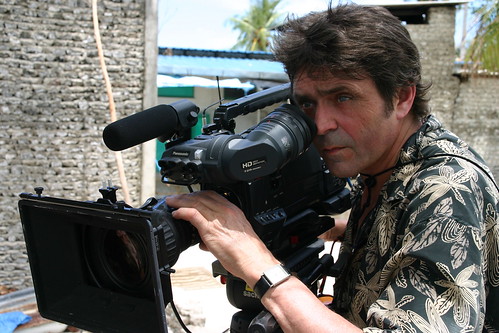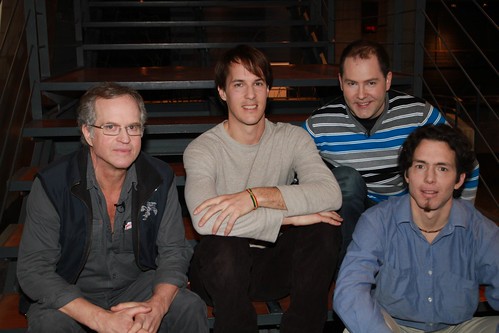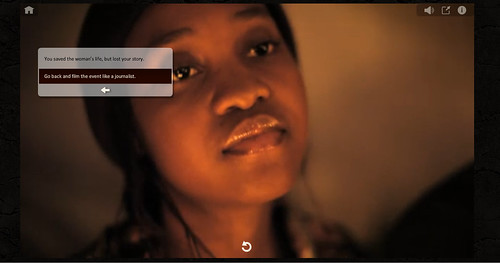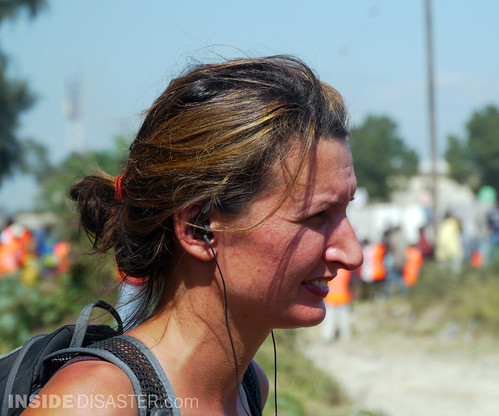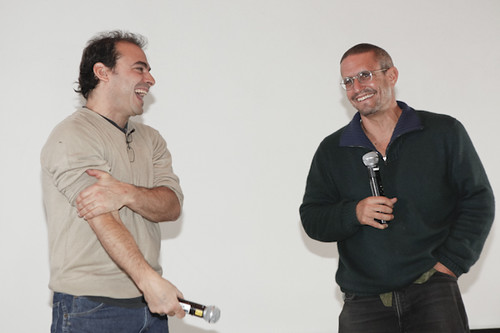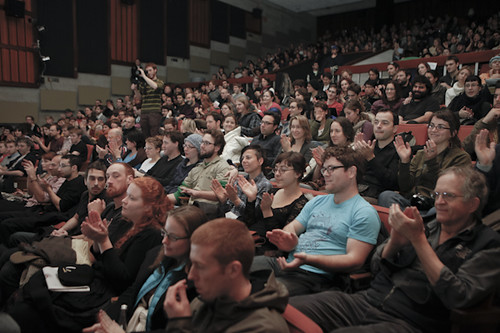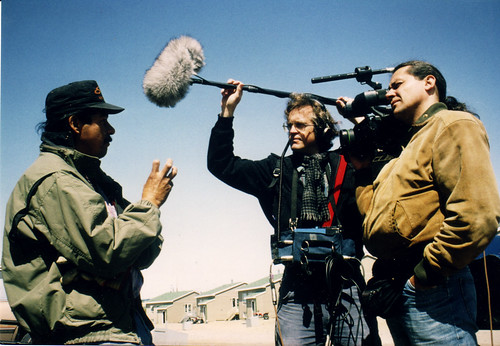
Last week I went to see a terrific documentary play called SEXY BÉTON, or “sexy concrete”. It was created by Annabel Soutar of the Porte Parole theatre company in Montreal – only the last in a series of documentary theatre performances.
And this truly is a documentary ‘démarche’ – to use this excellent French word which means a way of proceeding, an approach which involves a particular method. It’s an investigation of the cave-in of a concrete overpass that killed five people and seriously injured six others in Laval, just north of Montreal in 2006.
Annabel and her colleagues create a performance which is a hybrid of a documentary film shoot, a journalistic investigation and participatory research. They have a big advantage in that they don’t represent a media organization and they don’t have to bring a camera when they go to meet people. They record audio, and then use excerpts of people’s statements or dialogue to construct their play. People don’t have their guards up the way they would with a more elaborate or more journalistic setup.
What we learn from the play is revealing, shocking and thought-provoking. To sum it all up, this is a tragedy for which no one takes responsibility. The engineers, the construction companies, the sub-contractors, the civil servants working for the Department of Transport – no one wants to fess up to any wrongdoing or negligence.
To Annabel and her co-conspirators this case is a metaphor for the general state of affairs in our society. A lot is going wrong, catastrophically wrong, but no one is responsible. This is an important point.
And, in addition, the play seems incredibly timely in the present Québec context. The action takes place in Laval – Quebec’s second largest city – where municipal corruption is just now the subject of frequent scandals. And it deals with the construction industry, at a moment where a majority of Quebecers would like to see an official inquiry into corruption and wrongdoings in this sector. (Radio-Canada’s excellent investigative show Enquête should be credited with most of the revelations on these subjects.)
In creating this play, Annabel and her colleagues decided to do more than investigate. They attempted to convince the surviving victims to go for a lawsuit. Ignoring the advice from high-profile lawyer Julius Grey not to push the victims, they try hard but fail, and (though one might disagree with what they are doing) this is an important and interesting part of the story.
In watching the excellent crew of actors perform the interaction between the victims and with the documentarians, I felt like I was completely reliving my experience with the innocent victims of organized crime who were the subject of my film Hellbent for Justice (‘Pendant que court l’Assassin’.)
In both cases, the victims were completely unprepared for the complex physical, psychological and legal realities they suddenly had to deal with. And in both cases they have to confront bureaucratic machineries which don’t take their real-life situation into account.
The mise en scène (designed by Sophie Vajda and André Perrier) is great, the actors are fantastic, and completely bilingual. Watching this play is a truly Montreal experience of the best kind.
The play is still on until Feb 26. I am asking Annabel Soutar a few questions and will publish them in the coming weeks.
Thanks to Tobi Elliott for her help with this blog.
